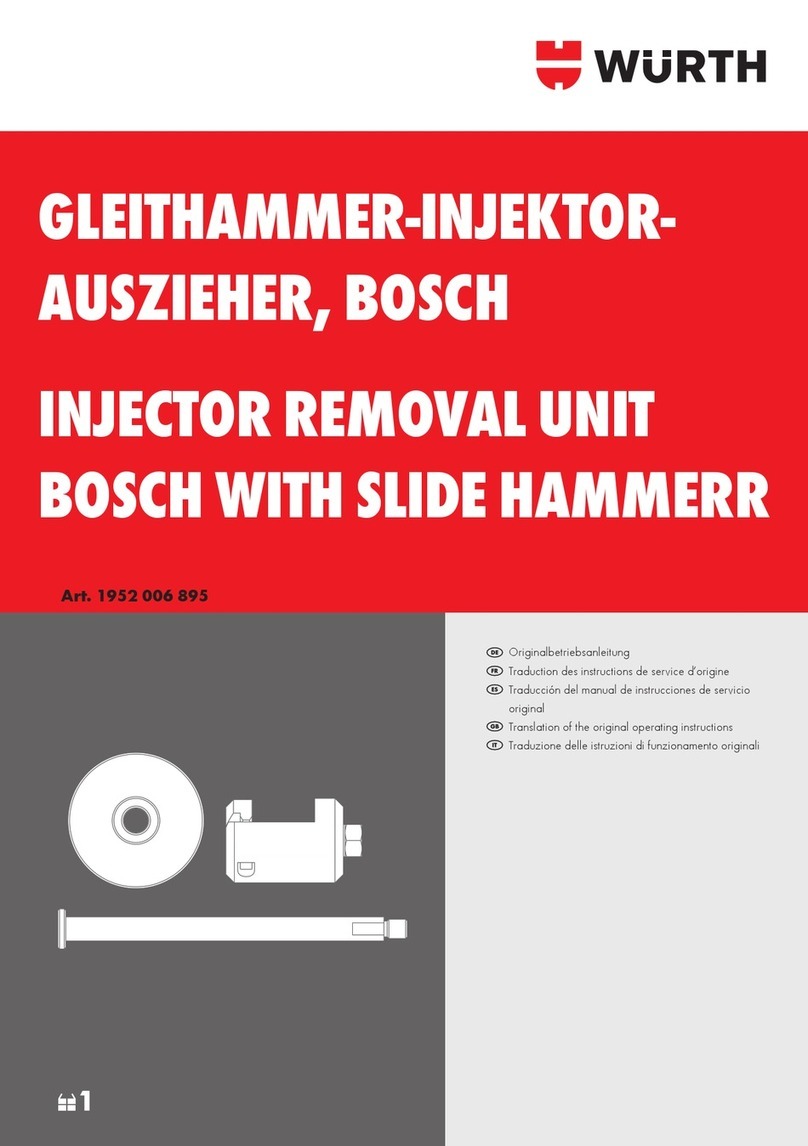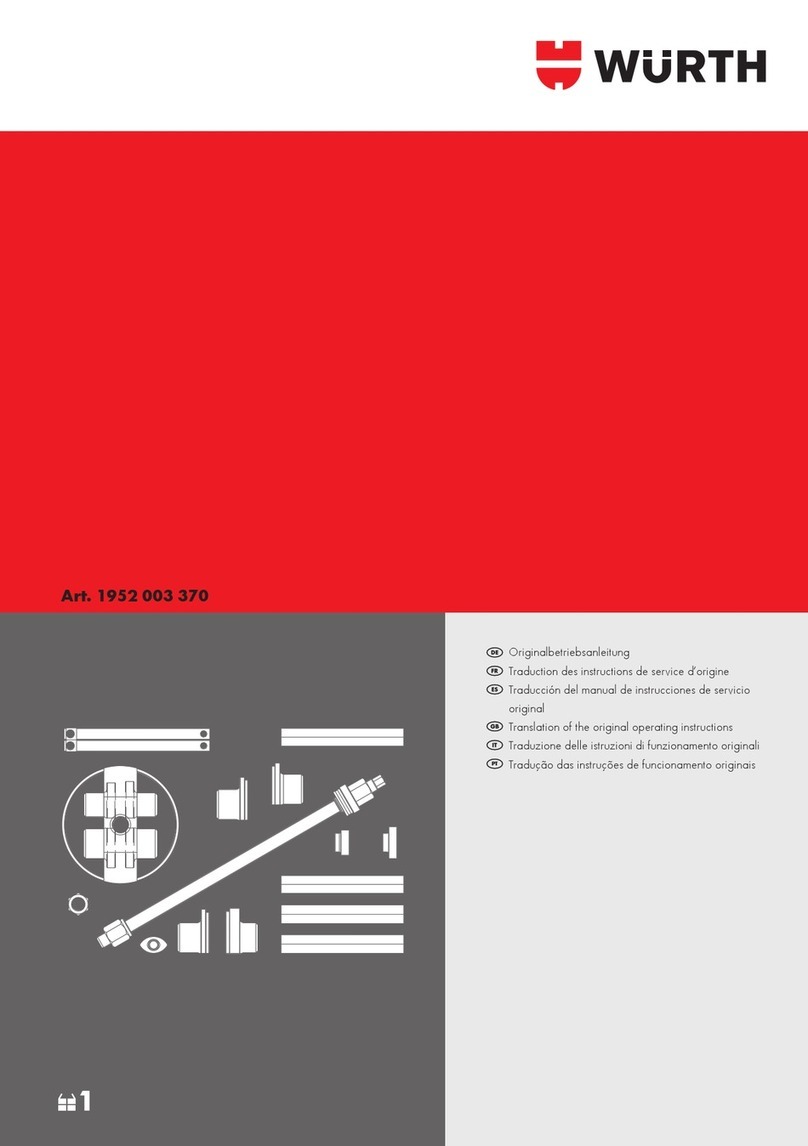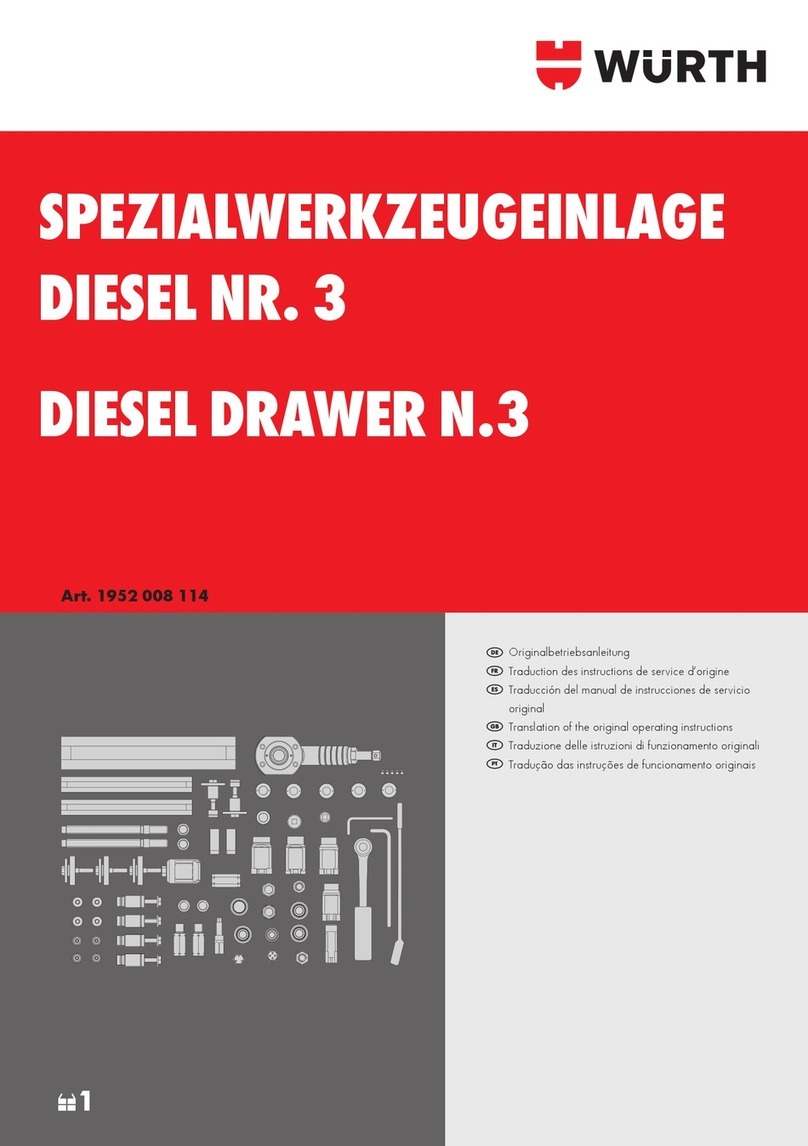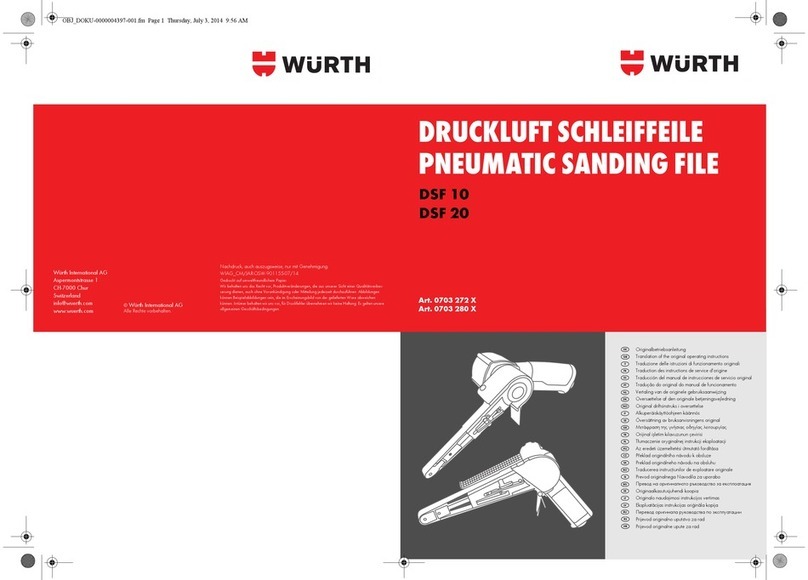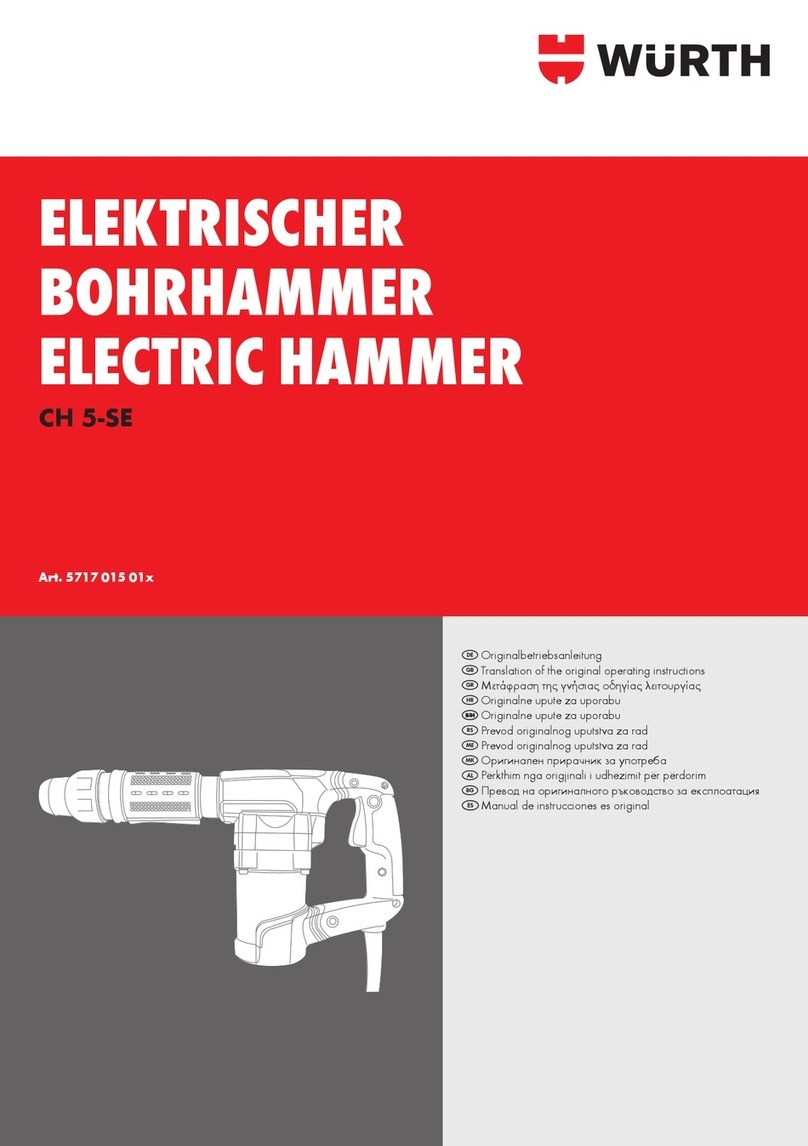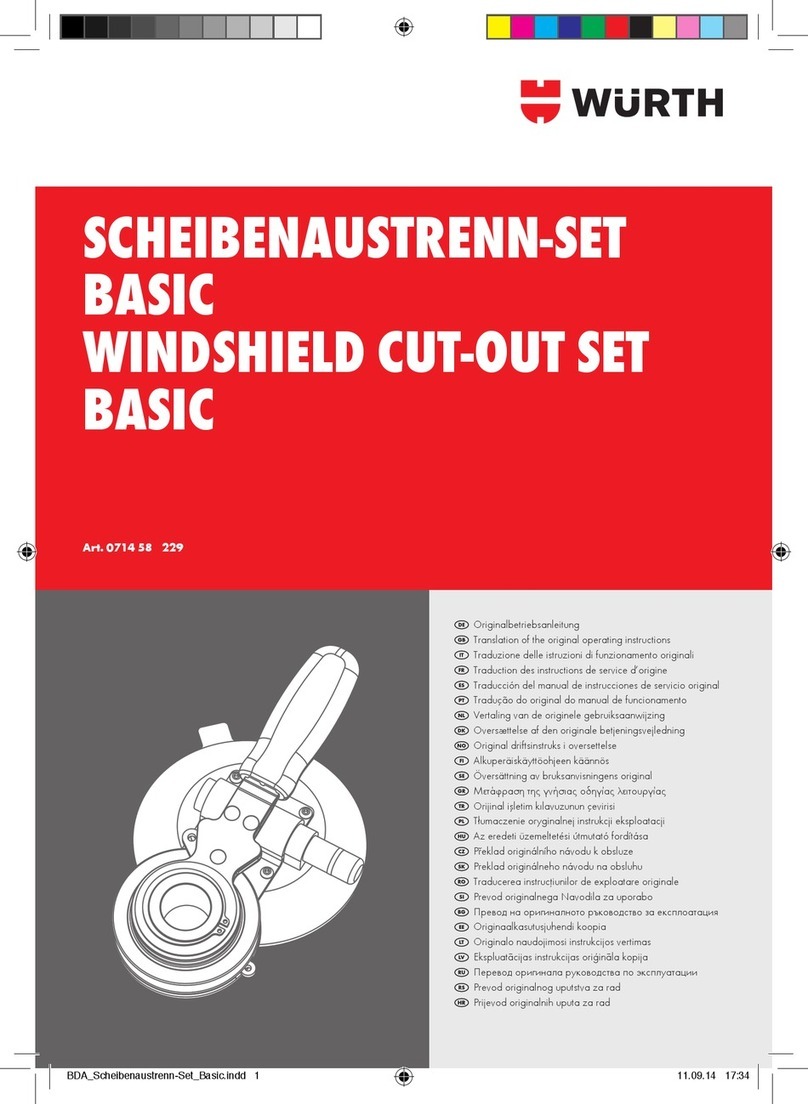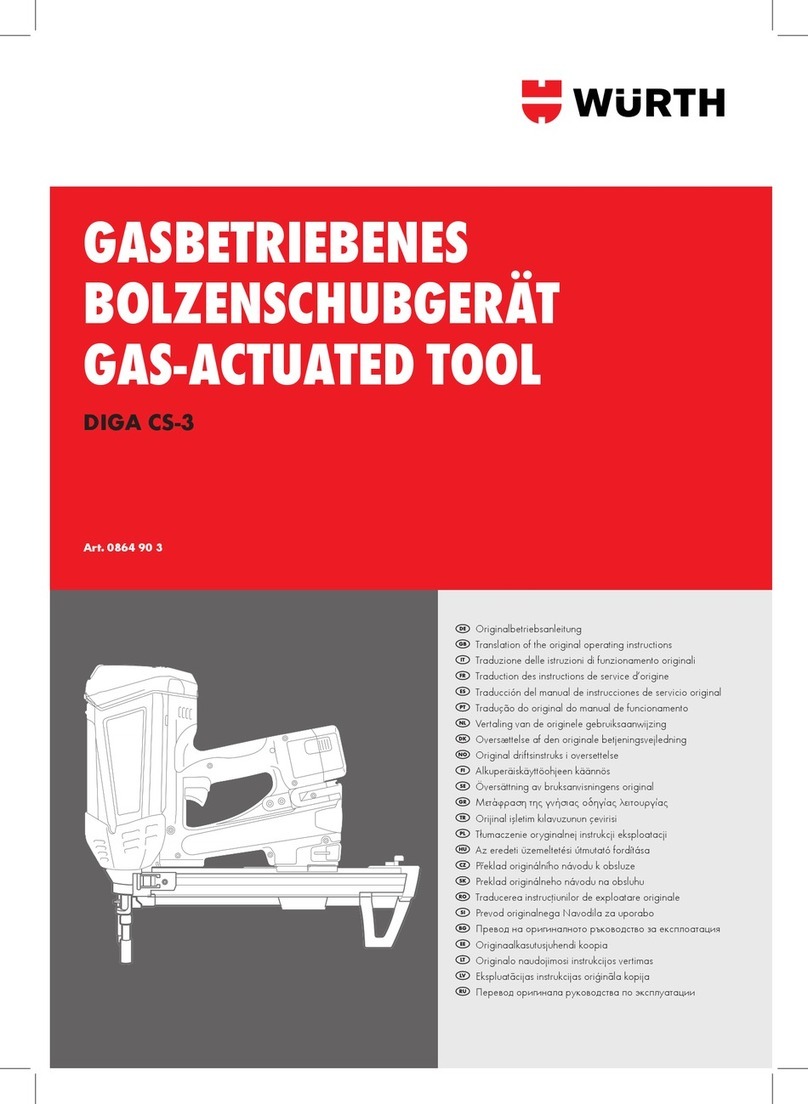
8
Spantiefe einstellen (Bild B)
Mit dem Führungsgriff
2
kann die Spantiefe stufen-
weise von 0 - 4,0 mm eingestellt werden:
Durch Drehen des Führungsgriffes
2
können auf der
Skala
3
die gewünschten Spantiefen eingestellt wer-
den. Dabei Führungsgriff
2
immer soweit drehen bis
dieser spürbar einrastet.
Parkschuh
Das Gerät ist mit einem Parkschuh
9
ausgestattet.
Dieser ermöglicht ein Abstellen des Gerätes unmit-
telbar nach dem Arbeitsvorgang, ohne die Gefahr
einer Beschädigung von Werkstückoberfläche oder
Hobelmesser.
Parallelanschlag (Bild C)
Der Parallelanschlag
17
dient zur besseren Führung
der Maschine beim Hobeln von schmalen Werkstük-
ken und zur Begrenzung der Falzbreite.
– Parallelanschlag
17
links oder rechts mittels
Winkel im Gewindeloch
6
montieren.
– Befestigungsschraube 19 festziehen.
– Die Falzbreite mittels Flügelmutter 18 einstellen.
Falztiefenanschlag (Bild D)
– Montieren Sie den Falztiefenanschlag 21 mit
der Befestigungsschraube 20.
– Falztiefenanschlag mittels Skala auf die ge-
wünschte Höhe einstellen und Befestigungs-
schraube festziehen.
Spanauswurf/Spanabsaugung
Beim Arbeiten entstehender Staub kann gesund-
heitsschädlich, brennbar oder explosiv sein.
Geeignete Schutzmaßnahmen sind erforderlich.
Manche Stäube gelten als krebserregend. Staub-/
Spanabsaugung verwenden und Staubschutz-
maske tragen!
Wählbarer Spanauswurf (Bild E/F)
Mit dem Umschalthebel 4 kann der Spanauswurf 1
nach rechts oder links umgestellt werden.
Absaugadapter 22 soweit in den Spanauswurf drü-
cken, bis er einrastet.
Zum Abnehmen Umschalthebel 4 nach oben ziehen
und Absaugadapter 22 herausziehen.
Bei linksseitigem Spanauswurf muss immer eine
Fremdabsaugung mit Staubsauger verwendet wer-
den, um eine Verstopfung zu vermeiden.
Den Spanauswurf 1 und den Verschluss 23 regel-
mäßig reinigen. Nicht mit den Fingern in den Spa-
nauswurf greifen!
Fremdabsaugung mit Staubsauger (Bild G)
Reduzierstück 24 auf Absaugschlauch stecken und
bis zum Einrasten drehen (Clip-System).
Zwischenadapter 25 auf Absaugadapter 22 ste-
cken und Absaugschlauch mit Reduzierstück
anschließen.
Würth bietet geeignete Staubsauger an. Das Gerät
kann an der Steckdose eines Würth-Staubsaugers
mit Automatikbetrieb direkt angeschlossen werden.
Beim Einschalten des Gerätes wird der Staubsauger
automatisch gestartet.
Eigenabsaugung mit Staubsack (Bild H/I)
Für kleinere Arbeiten kann der Staubsack 26 ver-
wendet werden (nur bei rechtsseitigem Spanauswurf
möglich). Staubsack 26 fest auf Absaugadapter 22
drücken.
Zum Reinigen und Entleeren des Staubsackes den
Deckel 27 etwas drehen und abziehen.
Beim Zusammenbau darauf achten, dass der Zap-
fen 29 in die Aussparung 28 eingreift (Bajonettver-
schluss).
Arbeitshinweise
❏Zu starker Vorschub mindert erheblich das Leis-
tungsvermögen des Gerätes und verringert die
Lebensdauer der Messer.
❏Nur scharfe Hobelmesser bringen gute Schnitt-
leistung und schonen das Gerät.
❏Messer rechtzeitig erneuern. Entsprechende Qua-
lität garantiert das Würth-Zubehör-Programm.
Flächen hobeln
Das Gerät eingeschaltet an das Werkstück heranfüh-
ren und darauf achten, dass die vordere Grundplatte
ganzflächig auf der Werkstückoberfläche aufliegt.
Wird das Gerät direkt auf das Werkstück
aufgesetzt besteht Rückschlaggefahr durch
das laufende Hobelmesser!
Den Hobel mit beiden Händen und gleichmäßigem
Vorschub über die zu bearbeitende Fläche führen.
Beim Glatthobeln von Flächen empfiehlt es sich, nur
geringe Spantiefen einzustellen und den Hobelvor-
gang mehrmals zu wiederholen.
EH 4book Seite 8 Dienstag, 24. Januar 2006 11:50 11
